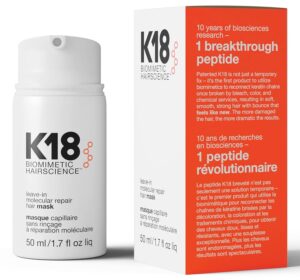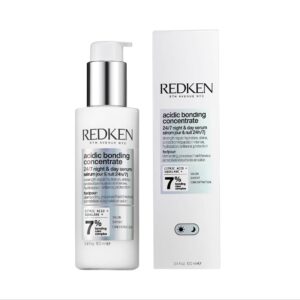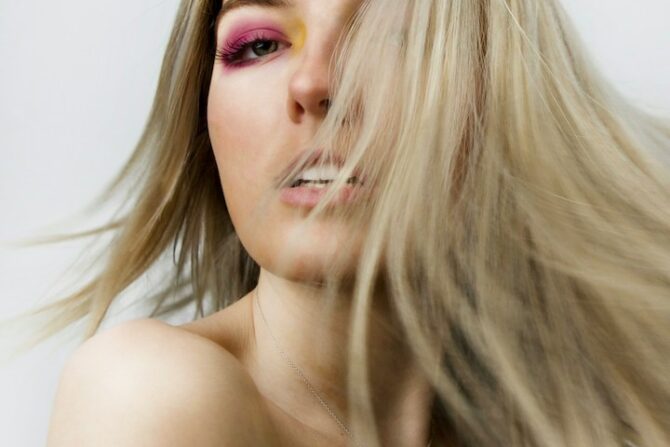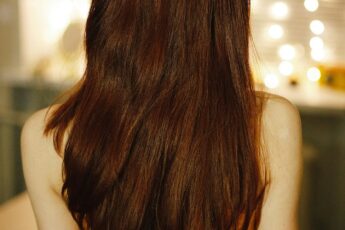Let me guess—you’ve been looking at your hair lately, wondering what went wrong. Maybe it’s dry, frizzy, or just feels like it gave up on you one day and never bounced back. You’ve tried masks, oils, and all those “repairing” shampoos that promised smoothness but delivered disappointment. I’ve been there too. That’s actually how I found out about hair bonding treatments.
At first, I thought it was just another buzzword. Bonding? What does that even mean? It sounded like a science project for your head. But when I took the time to understand it—and more importantly, when I tried it myself—things changed. And not overnight, but in the kind of slow, steady way that actually lasts.
If you’re tired of damage control and just want your hair to feel like itself again, keep reading. I’ll keep it simple and honest.
Table of Contents
What Hair Bonding Treatment Really Is
Here’s the thing—hair bonding isn’t just another deep conditioner. It doesn’t sit on the surface and pretend to fix things. What makes bonding treatments different is that they go inside your hair. Right into the broken bonds that hold your strands together.
When you bleach, straighten, or even color your hair, those internal bonds break down. The result? Hair that looks dull, feels weak, and just doesn’t behave anymore. Bonding treatments rebuild those connections. Think of it like patching up the inside of a wall instead of just painting over it.
And no, it’s not the same as a keratin treatment. Keratin smooths the outside. Protein treatments? They help too, but in a different way. Bonding is deeper. It doesn’t make your hair look different—it makes it stronger from within. That’s the beauty of it.
Signs You Might Need Hair Bonding Treatments
Now, how do you know if this is what your hair needs?
Let me break it down for you:
- Your hair stretches like gum when it’s wet, then snaps.
- You’ve got split ends no matter how often you trim.
- Frizz is constant—no oil or cream really helps.
- You’ve colored or bleached your hair more than once.
- Heat tools are part of your daily routine.
- Your hair just feels weak. You can feel it when you run your fingers through.
If you nodded at more than one of those, bonding treatment might be worth trying. I didn’t realize how damaged my hair was until it really started breaking. I wish I had started bonding treatments earlier, before it got that bad.
Also Read: Game-Changing Hair Mask Ingredients You Need to Try Now
Types of Hair Bonding Treatments
So now that you’re curious (or maybe already convinced), let’s talk about the options. There are a few different bonding treatments out there. Each one works in a slightly different way. I’ve tried a few myself, and here’s what I learned:
Olaplex

This is probably the most talked about. It’s great for hair that’s been bleached or colored a lot. What makes Olaplex stand out is its patented ingredient that actually rebuilds disulfide bonds. That’s the kind of damage bleach and dye usually destroy.
- Pros: Works well for major bleach damage, available in salons and at home.
- Cons: Can be drying if you don’t follow it with moisture. Also a bit pricey.
K18

This one’s newer and really smart. Instead of just patching up broken spots, K18 claims to reconnect keratin chains that make up your hair’s core structure. You apply it like a leave-in, and it works in just four minutes.
- Pros: Quick, easy, and works even after major damage.
- Cons: It’s expensive and doesn’t feel super conditioning, so don’t expect softness right away.
Redken Acidic Bonding Concentrate

This one’s a little gentler. It repairs bonds but also focuses on keeping the hair hydrated and pH-balanced. I like using this when I feel like my hair needs both strength and softness.
- Pros: Hydrating, smells nice, easy to use.
- Cons: Results aren’t instant—you’ll need a few uses.
Salon Bonding Options
Most salons now offer their own take on bonding treatments. Some will mix a bonding booster into your color treatment. Others have full bonding services. If you’re not sure what to ask for, just say this: “I’m looking for a bonding treatment to repair internal damage—not just a protein or keratin treatment.” That helps them understand exactly what you mean.
What It Feels Like During and After
I remember the first time I did a bonding treatment. I used Olaplex No. 3 at home. I sat there for 20 minutes wondering if anything was even happening. My hair didn’t feel softer right away. Honestly, it felt kind of the same.
But after a few uses? That’s when I noticed it.
Suddenly, my hair wasn’t breaking when I brushed it. It wasn’t frizzing up right after I styled it. It still looked like my hair—but healthier, steadier, like it had more life in it.
In a salon, it feels even better. When I had a full bonding treatment professionally done, my hair felt stronger right after they rinsed it. Not heavy or coated—just clean and… solid. That’s the word. Solid.
Don’t expect fireworks after the first try. It’s subtle. But with each use, you’ll start to feel it in the way your hair handles stress—washing, brushing, drying. That’s the real win.
At-Home vs Salon Bonding Treatments
So, should you do it at home or leave it to the pros?
Honestly, both work. I started at home because I wasn’t ready to spend salon money. But later on, when I got my hair colored again, I asked for a professional bonding add-on. The combination made a big difference.
Here’s what I learned:
- At-home treatments (like Olaplex No. 3 or K18) are great for maintenance. You can use them weekly or bi-weekly depending on how damaged your hair is.
- Salon treatments work best when your hair is extremely damaged, or you’re already getting a color service. They can customize the formula and control the process better.
If you’re doing bonding for the first time and your hair is really in bad shape, I’d say go to a salon just once. After that, you can maintain it at home.
How to Make the Results Last
This part’s important. Bonding treatments help, but your daily habits matter too. If you keep damaging your hair without giving it a break, the results won’t last.
Here’s what I do:
- I avoid sulfate shampoos. They strip the hair and weaken the bonds again.
- I use a wide-tooth comb on wet hair—no more yanking brushes through.
- I added a heat protectant every time I style, even if I’m just blow drying.
- I wash my hair less often. Every 3-4 days instead of every day.
- And I keep using the bonding product once a week.
Also, don’t go crazy with color. Give your hair time to recover between appointments. I used to book back-to-back bleaching sessions. Big mistake. Now I wait, and my hair is better for it.
You Can Also Read: The Truth About Cream-Based Hair Treatments (And How to Use Them Right)
My Own Experience With Hair Bonding
Let me be real with you. I didn’t think bonding treatments would work. My hair was a mess from constant coloring and flat ironing. I thought I needed to cut it all off and start over.
But I gave bonding a shot.
The first month, I didn’t notice much. But I stuck with it—using Olaplex one week, then trying K18 the next month. I kept up the habits, and slowly, my hair stopped breaking. I started getting compliments again. Even my ends looked healthier.
It wasn’t magic. But it felt like my hair finally had a chance to heal. And I honestly wish someone had told me earlier how much of a difference bonding treatments could make.
If you’re feeling frustrated, just know this—you don’t have to keep struggling with damaged hair. You have options. And they actually work.
Conclusion
Hair bonding treatments might sound like a big deal, but they’re really just about giving your hair a second chance. Not a shiny, fake makeover—but real, internal healing. And trust me, that’s worth a lot more.
You don’t need to do it all at once. Try one product. See how your hair feels. Stay consistent. And most importantly, be kind to your hair. You’ve probably been through enough with it already.
So if you’ve been thinking about it, consider this your sign. Give your hair the care it’s been quietly asking for. You’ll thank yourself later—I promise.
Frequently Asked Questions
Is bonding treatment safe for color-treated hair?
Yes, it’s actually recommended if you color your hair. It helps repair the damage caused by bleaching and dyeing.
How soon can I wash my hair after bonding?
If it’s a salon treatment, ask your stylist. For at-home treatments like Olaplex or K18, follow the instructions—but usually, you can wash right after or leave it in, depending on the product.
Does bonding treatment straighten hair?
No, it doesn’t straighten. It repairs damage inside the strand. Your natural texture stays the same—it just becomes healthier and easier to manage.
Can I do bonding treatments if I have curly hair?
Absolutely. Curly hair can benefit a lot from bonding treatments, especially because it tends to be drier and more fragile. Just make sure to follow up with moisture.



